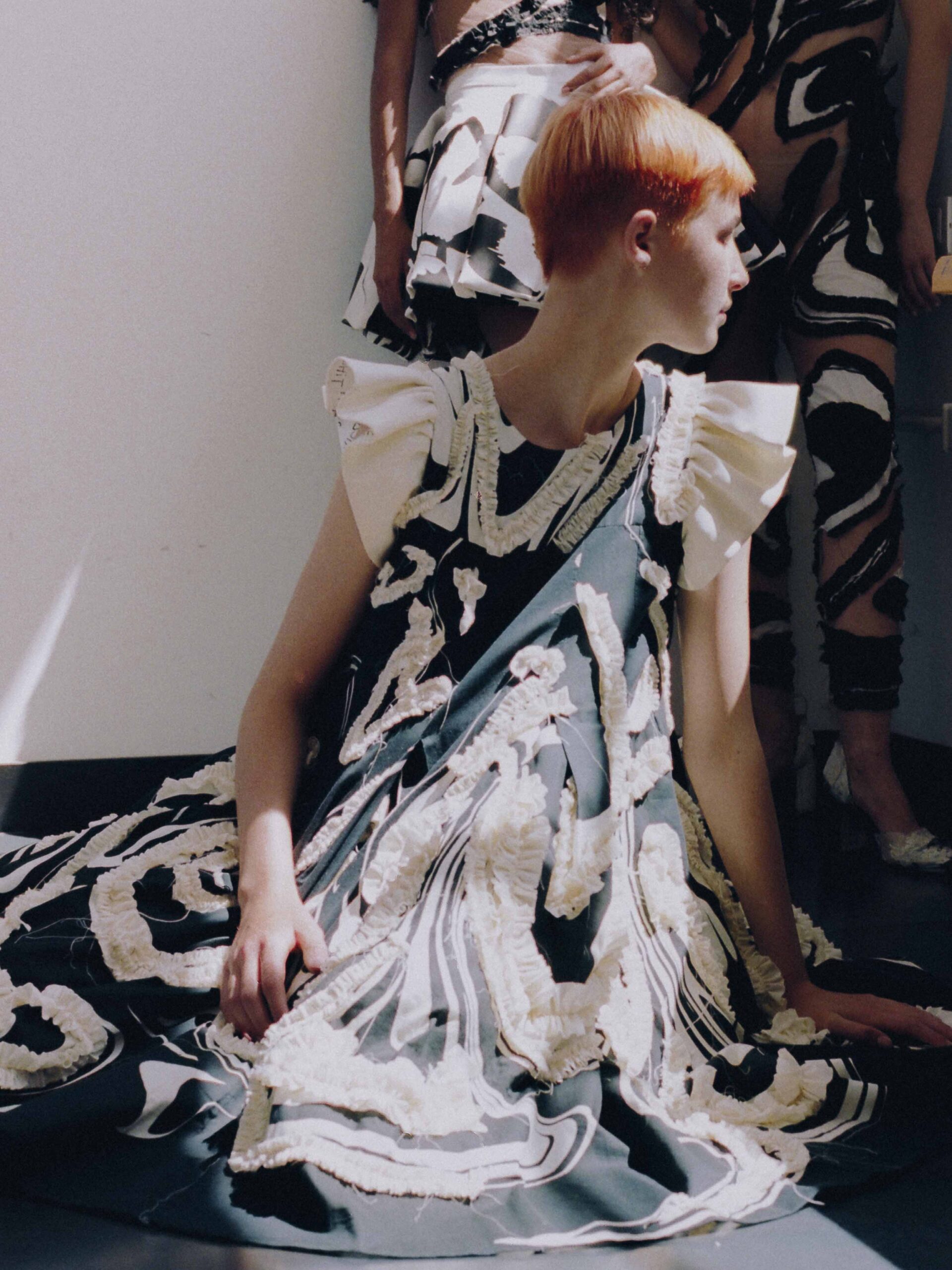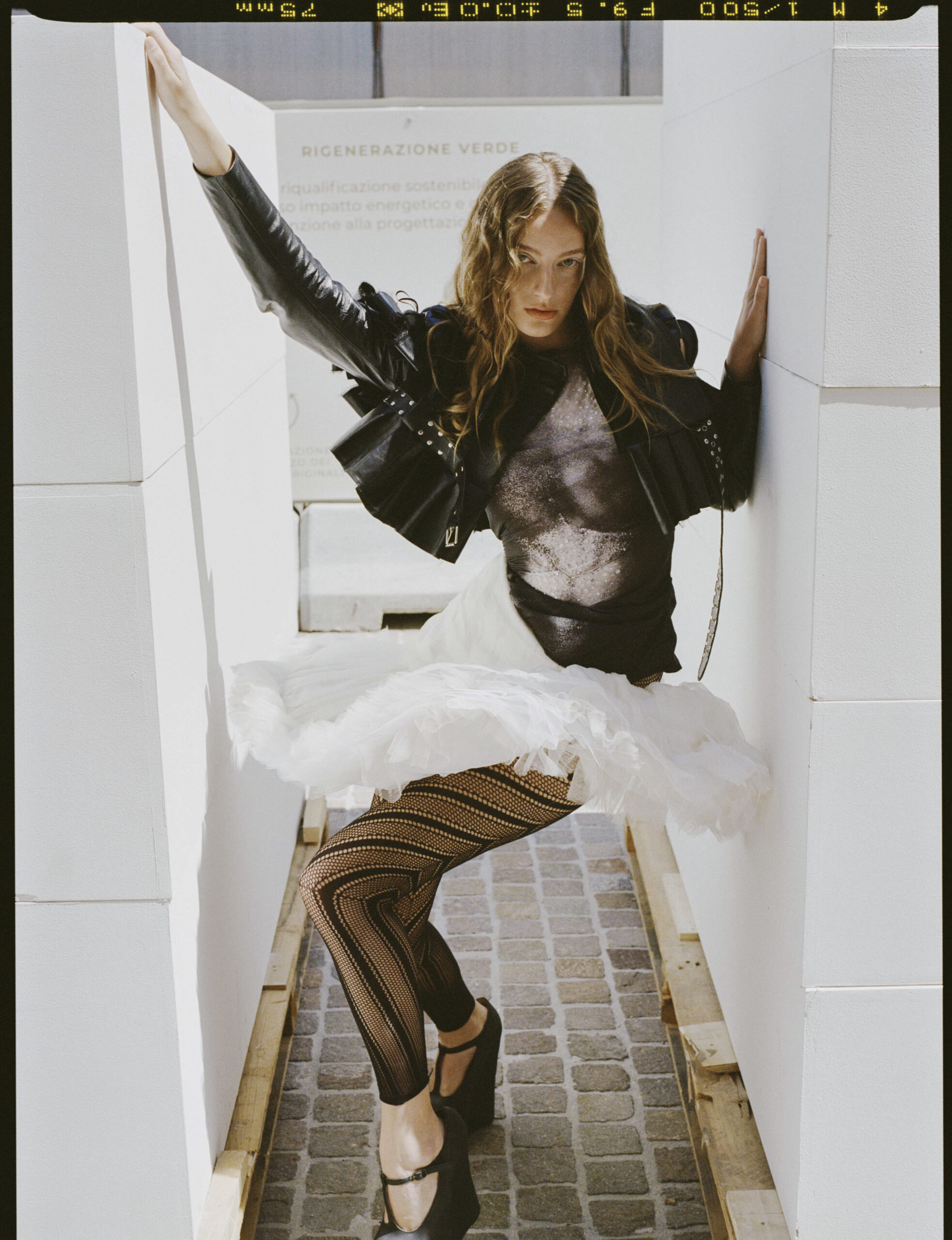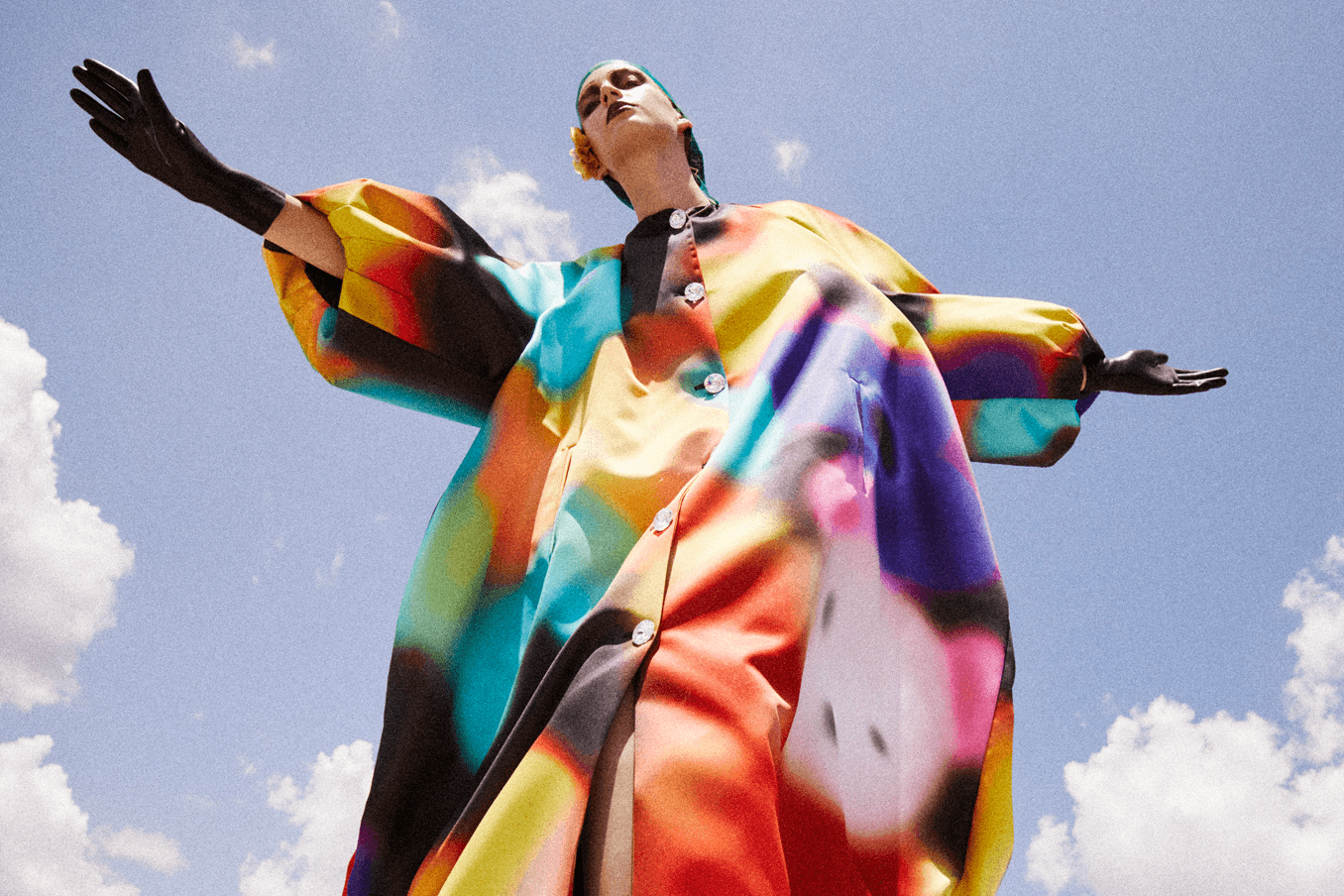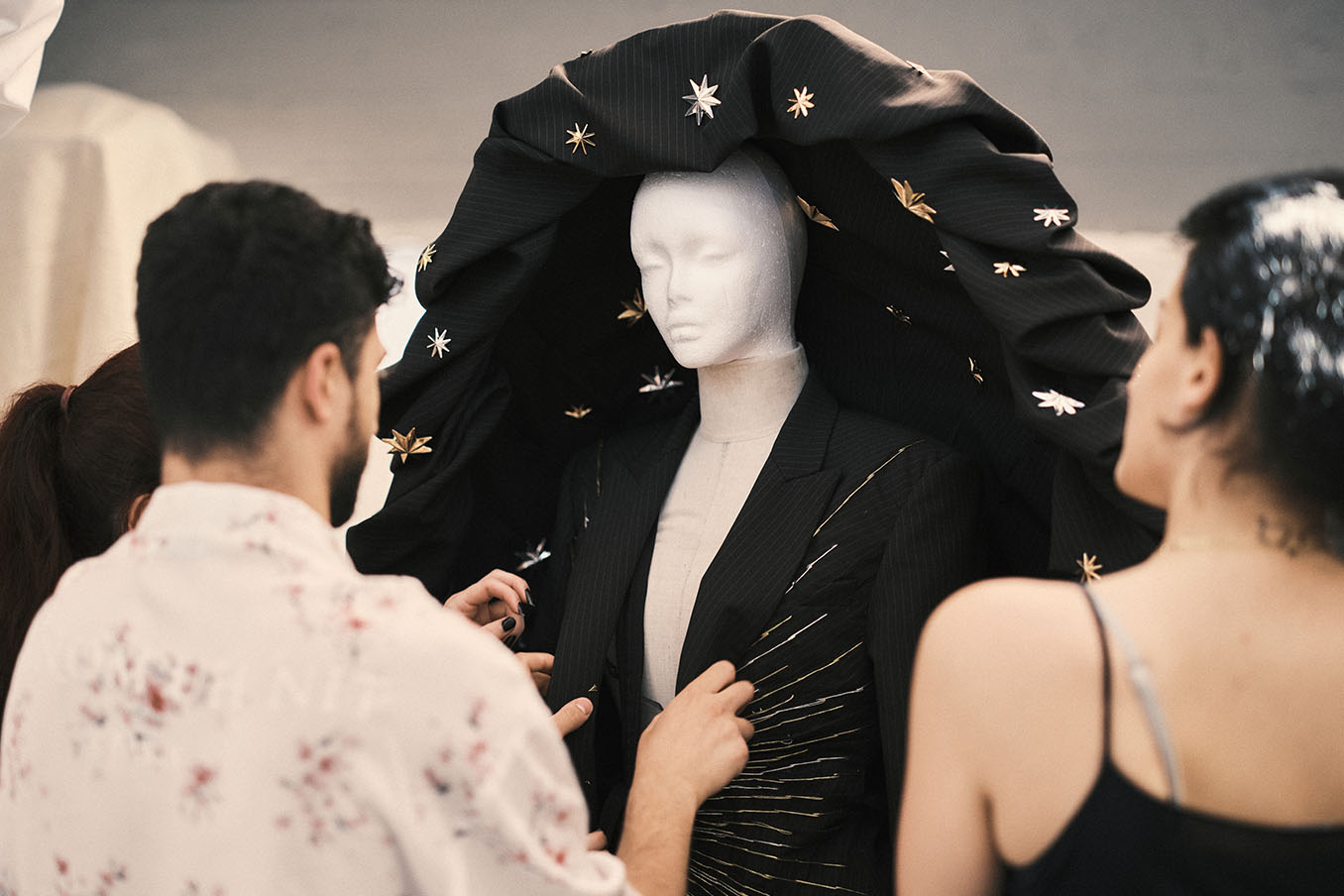Master in Fashion Art Direction students, Khushi Gajjar and Marie-Sophie Lipman, investigate the symbiosis between cinematic costume design and fashion design.
In recent years, we have seen the conversation of costume design merge with pop culture. This focus, unfortunately, often only arises through the lens of entertainment, leaving the true appreciation of the art form itself behind. This raises an important question: do today’s fashion consumers recognize the profound influence cinema has on the trends they eagerly adopt?

The Gothic Revival: From Screen to Runway
The recent resurgence of gothic aesthetics demonstrates the powerful relationship between costume design and fashion trends. Gothic influences seen in Fall/Winter 2024-25 collections are pushed further into the cultural zeitgeist thanks to films like Robert Eggers’s Nosferatu.
Costume designer Linda Muir meticulously studied historical decay to produce garments that appear to emerge from the grave itself: somber palettes and Victorian-inspired silhouettes that evoke period authenticity and haunting beauty ooze out of the film and on to the runway, as seen in FW 25 shows of designers such as Rick Owens and Dilara Findikoglu, who are pushing gothic aesthetics beyond a threshold, blending history with modern silhouettes.
Color Revolutions and Age Rebellion
On a similarly dark yet tonally different note, The Substance takes a bold stance against Hollywood’s traditionally muted palette for older women. The costume design by Emmanuelle Youchnovski makes a powerful statement through electric dark blues, striking reds, and the now-iconic yolk-yellow coat – a symbol for rebellion.
This color revolution goes hand in hand with Gen Z’s maximalist self-expression and rethinks the very idea of color blocking, as seen on the FW25 runway at Miu Miu. Leading actress Demi Moore used her acceptance speech to challenge Hollywood’s obsession with youth, an obsession long paralleled in fashion, an industry with an equally persistent problem with age discrimination. For decades, Moore was dismissed as a “popcorn actress,” the same way older women in fashion are sidelined once they cease to fit the industry’s airbrushed ideal. Moore’s proclamation to “put down the measuring stick” resonates across both worlds as a challenge to these limiting paradigms.
Accessibility and Mass Appeal: The Wicked Phenomenon
Jon M. Chu’s adaptation of Wicked, exemplifies how exceptional costume design can seamlessly translate into pop culture. The film’s visual impact extended far beyond the screen, inspiring collections from high street brands like GAP, H&M, and Crocs that made character-inspired looks accessible to the general public.
While the costumes and press tour looks were extraordinary (think of Cynthia Erivo’s Schiaparelli ensemble at the London premiere), they exist at a price point well beyond the average consumer’s reach. This accessibility gap reveals a crucial tension: fast fashion collaborations may democratize film-inspired aesthetics, but they cannot replicate the artistry and craftsmanship of the original costume design.
Costume design can at times feel less relatable to the general public. This is where the success of Paul Tazewell’s costume design for the film lies: in its emotional connection with viewers. His work was so powerful that it dominated social media conversations, contributing to the generation of countless memes about the emotional impact of the Wicked press tour.
Nostalgia and Authenticity
Films with nostalgic narratives consistently create deeper emotional connections with audiences, though this presents unique challenges for costume designers. Rather than simplifying their work, creating costumes for such productions requires balancing audience expectations with historical accuracy and contemporary relevance.
This challenge is exemplified in the musician biopic A Complete Unknown, where Timothée Chalamet plays Bob Dylan. The worn-out look of the costumes provided the perfect opportunity for sourcing vintage, costume designer Arianne Phillips chose to create pieces from scratch, source authentic vintage, and go back to the brands Dylan loved, to create pieces ad-hoc: Phillips got in touch with Paul O’Neill, the Design Director at Levi’s Vintage Clothing, working together to recreate styles for the film as some were so rare they were only in production for two years in the 1960s.
This meticulous attention to authenticity while maintaining a contemporary sensibility demonstrates how costume design functions as both historical recreation and modern interpretation.
Beyond Entertainment
Costume design deserves recognition as an important component for popular fashion culture. It often remains underappreciated and separate from contemporary fashion discourse, sidelined and reserved for entertainment and social media discussions, instead of being considered as a serious extension of fashion design.

Its strength, however, lies in its connection to storytelling and human emotion. The most successful translations from screen to runway occur when an emotional resonance is communicated through the costumes, transcending the borders of the film itself. Audiences and consumers continue to seek authenticity and uniqueness through their fashion choices and therefore the influence of exceptional costume design will continue to shape what we wear and how we understand identity and each other.
Credits
Written by:
- Khushi Gajjar, Master in Fashion Art Direction
- Marie-Sophie Lipman, Master in Fashion Art Direction
- Alessandro Burzigotti


